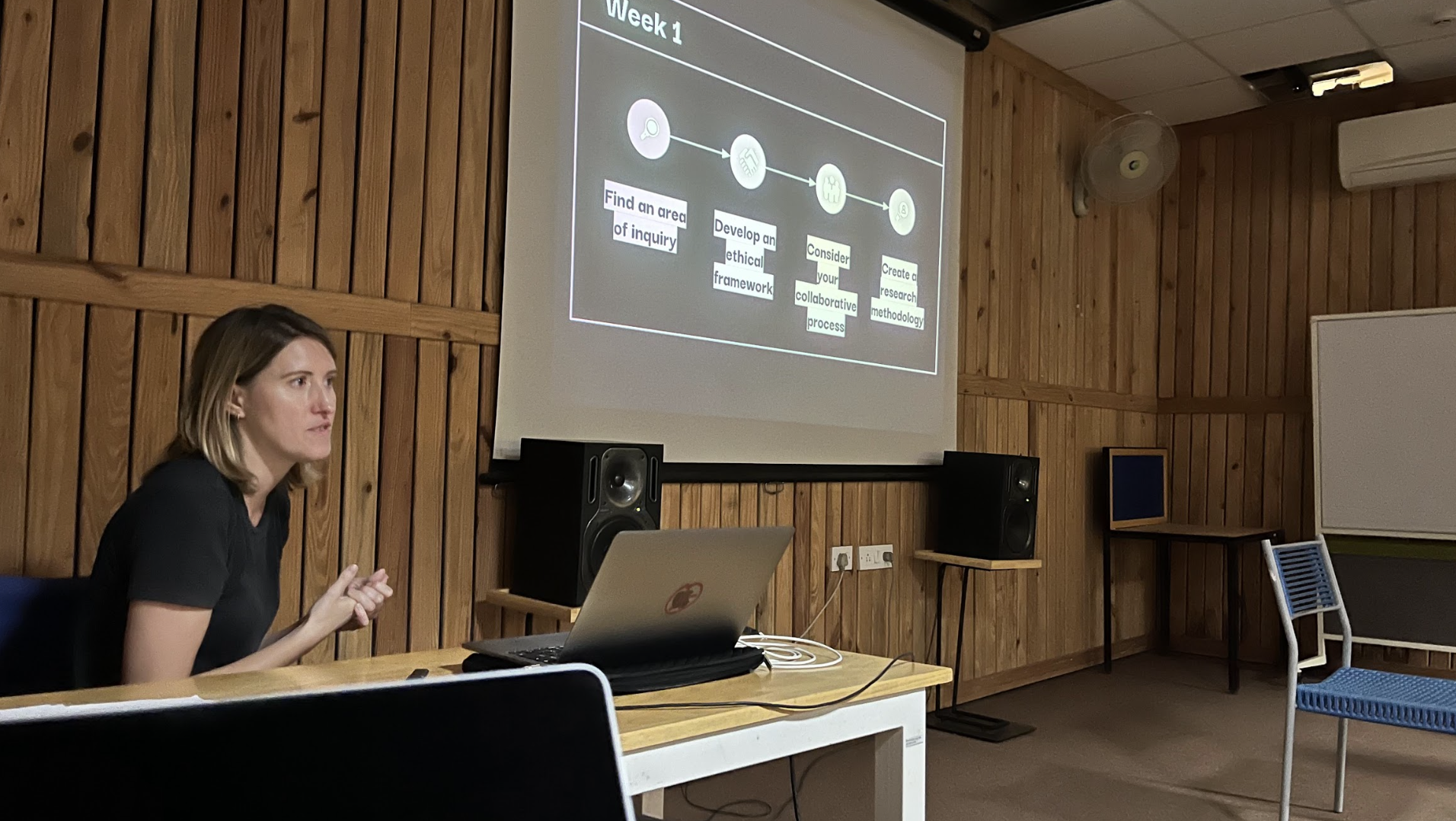
Social Listening is a project led by CRiSAP PhD researcher Hannah Kemp-Welch as part of this year's Srishti Interim and exhibited at SMI Live events on 27-28 Jan at venues across Bengaluru. The Interim is an annual month-long event where students from Srishti Manipal Institute of Art, Design & Technology undergraduate program work intensively alongside contemporary artists from around the world.
Social Listening
What can you learn about Yelahanka through listening? This project borrows protocols for listening from sound art practice, for use as methodologies for socially-engaged arts. ‘Social listening’ is proposed as an essential starting point for work that seeks to initiate social dialogue.
During this project, students listened together and separately, comparing experiences and examining their ‘listening positionalities’ (Robinson, 2021). Devising group agreements for collaborative working and ethical research practices, students considered how they might use artistic practice to connect to concerns in the neighbourhood.
This process has resulted in three proposals for community-based projects. Each project proposes dialogue with local communities through creative workshops or interventions in public space. Proposals have been developed in consultation with Yelahanka workers and residents, and suggest artistic strategies to facilitate communication across social and cultural divides.
Srishti Interim interview Hannah to discuss the project further:
Could you elaborate further on the role of listening as an artistic method in this project? What is your artistic vision with this project?
During this project, students trialled two sets of listening ‘protocols’. The first was developed by sound artist Peter Cusack, who outlines his process for listening and recording ‘in the field’ for the ‘Listening Across Disciplines’ project. The second series of protocols are by activist/artist collective Ultra-Red, who suggest listening as part of their ‘militant sound investigation’ process. I see these as useful tools when approaching socially-engaged practice - to begin with a process of listening, rather than beginning with an assumption or hypothesis. My hope is that this process opens us up to new possibilities and places the investigator into a service-mode - looking to learn rather than fix.
How will interacting with the residents aid the students in gaining a better understanding of the project?
The students considered how and why to engage with residents deeply before making an approach. They devised an ethics checklist for their project, detailing who they would like to interact with and how. They considered ‘levels’ of participation, as articulated in Arnstein’s Ladder (1969), power dynamics in social relations and the ethics of interviewing. Following these discussions, they took steps to engage with Yelahanka workers and residents, to gain a broader view of some of the social concerns they identified through their listening practices. Through this process, students heard perspectives which differed from their own, and met the challenge of accessing voices which are so often marginalised. More widely, the project questions the politics of ‘voicing’ (who speaks and how/why? whose voices are absent?), and frames listening as an activity with equivalent agency.
What would be the audience's experience of this project?
The audience are invited to inspect three proposals for community-based art projects. Each proposal displays research undertaken by students during the project alongside their creative ideas to respond to concerns in the neighbourhood. Viewers will gain insights into aspects of life in Yelahanka, and be invited to consider the role art plays in civil society. How can art facilitate communication across social and cultural divides?


